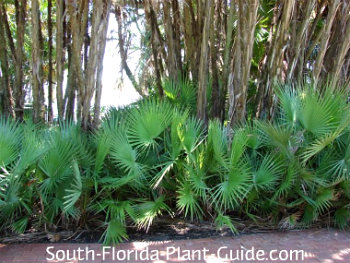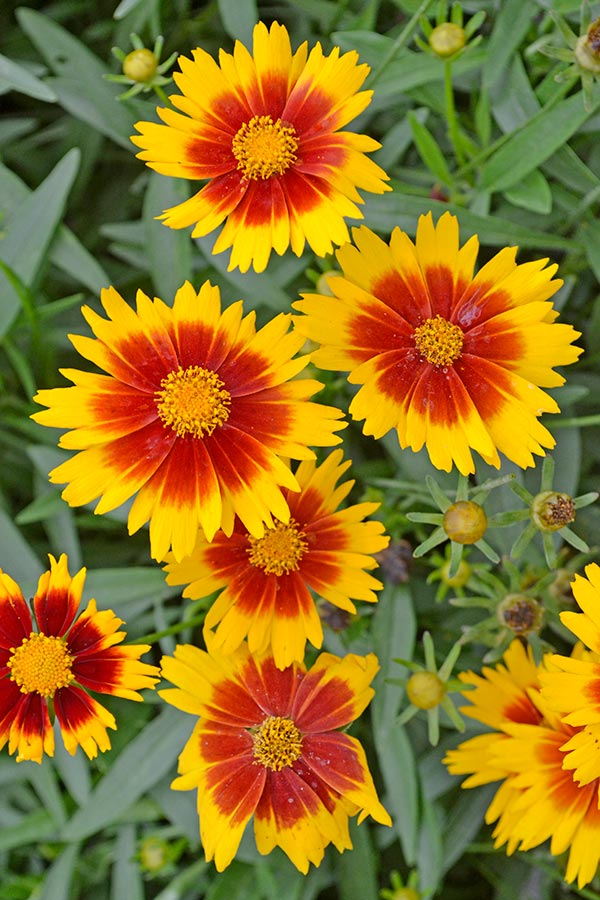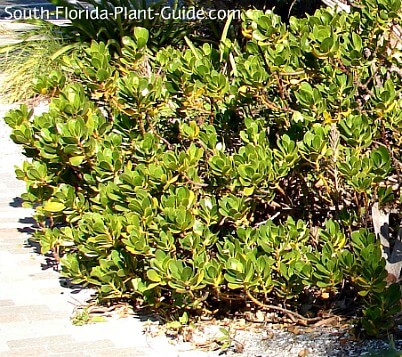Are you looking to transform your South Florida garden into a vibrant, thriving oasis? Choosing the best native plants is the smartest way to create a beautiful landscape that thrives with less effort.
Native plants like Coral Bean, Beach Sunflower, and American Beautyberry are perfectly adapted to South Florida’s unique climate. They attract local wildlife, require less water, and resist pests naturally—saving you time and money. You’ll discover the top South Florida native plants that will make your garden flourish while supporting the environment.
Ready to make your outdoor space stand out? Let’s dive in and explore the best native plants for your South Florida home.
Top Shrubs For South Florida
Shrubs form the backbone of many South Florida gardens. They provide color, texture, and structure year-round. Choosing native shrubs ensures plants thrive with less water and care.
Native shrubs support local wildlife and resist pests better than non-natives. They bloom in vibrant colors and attract birds and butterflies. These plants suit South Florida’s unique climate and soil.
Beautyberry And Coral Bean
Beautyberry stands out with bright purple berries in fall. Its arching branches create a lovely shape. This shrub grows well in sun or partial shade.
Coral Bean offers striking red flowers and orange seeds. It attracts hummingbirds and bees. Coral Bean tolerates dry soil and adds tropical flair.
Dwarf Simpson Stopper
The Dwarf Simpson Stopper is a compact, evergreen shrub. It features glossy green leaves and red berries. This plant is perfect for small spaces and hedges.
It thrives in full sun and handles salty air. Birds love its berries, making it a wildlife-friendly choice.
Firebush And Yellow Jessamine
Firebush blooms with bright red-orange flowers most of the year. It draws butterflies and hummingbirds easily. Firebush grows fast and tolerates drought well.
Yellow Jessamine produces fragrant yellow blooms in early spring. It is a climbing shrub but can be trained as a bush. This plant prefers sunny spots and well-drained soil.
Native Trees That Thrive
South Florida’s climate supports many native trees that grow strong and healthy. These trees suit the soil and weather perfectly. They need less water and care than non-native trees. Planting native trees helps local wildlife and keeps the environment balanced.
Below are some native trees that thrive in South Florida’s unique conditions. Each tree adds beauty and value to your landscape.
Gumbo Limbo And Red Maple
The Gumbo Limbo tree stands out with its peeling red bark. It grows well in sandy soils and resists storms. This tree provides shade and food for birds.
The Red Maple shows bright fall colors. It adapts to wet and dry soils. Its leaves give a splash of red and orange in autumn.
Southern Magnolia
Southern Magnolia features large, fragrant white flowers. It keeps its dark green leaves all year. This tree grows slowly but lasts for decades.
It attracts bees and butterflies with its sweet scent. The Southern Magnolia fits well in gardens and parks.
Florida Maple And Live Oak
Florida Maple thrives in moist areas and has bright green leaves. It offers shade and shelter for many animals.
Live Oak is a sturdy tree with wide branches. Its thick leaves create cool shade. Many birds nest in Live Oak trees.
Both trees add strong, natural beauty to South Florida landscapes.
Vines And Climbers
Vines and climbers add height and texture to South Florida gardens. They grow upward, covering fences, walls, and trellises with lush foliage and vibrant flowers. These plants attract birds and pollinators, creating lively outdoor spaces. Choosing native vines supports local ecosystems and ensures plants thrive in the climate. Below are some of the best native vines and climbers for South Florida gardens.
Coral Honeysuckle
Coral Honeysuckle is a fast-growing vine with bright red flowers. Its tubular blooms attract hummingbirds and butterflies. This vine tolerates sun and partial shade well. Coral Honeysuckle can cover fences or trellises quickly, adding color and life. It requires little water once established and resists pests naturally.
Passion Flowers
Passion Flowers are striking vines with unique, intricate blossoms. Their bold flowers come in purple, white, and pink shades. These vines support native pollinators like bees and butterflies. Passion Flowers grow well in sunny spots with good drainage. Their tendrils help them climb structures easily, creating beautiful displays.
Native Honeysuckles For Pollinators
Native Honeysuckles provide nectar-rich flowers that feed pollinators all year. These vines bloom in shades of yellow, cream, and orange. They attract bees, butterflies, and hummingbirds. Native Honeysuckles prefer well-drained soil and moderate sunlight. Their fragrant flowers add sweet scents to your garden space.
Grasses And Groundcovers
Grasses and groundcovers form a vital part of South Florida’s native landscape. They hold the soil, reduce weeds, and create a natural, lush look. These plants thrive in the local climate and need less water and care than non-native types. Using native grasses and groundcovers supports local wildlife and helps keep the environment healthy.
Muhly Grass
Muhly grass is a popular native grass in South Florida. It grows in clumps with fine, airy leaves. In fall, it produces pink to purple flower plumes that look like clouds. This grass adds color and texture to gardens and natural areas. Muhly grass is drought-tolerant and grows well in sandy soils.
Coontie And Native Ferns
Coontie is a slow-growing groundcover with dark green, fern-like leaves. It is one of the oldest plants in Florida and a food source for native butterflies. Native ferns also thrive in shady spots and add a soft green carpet to the ground. Both coontie and ferns help prevent soil erosion and keep the soil moist.
Tickseed And Wildflowers
Tickseed is a bright, cheerful wildflower that grows close to the ground. It has yellow, daisy-like flowers that bloom for months. Many other native wildflowers also grow well as groundcovers. They attract bees, butterflies, and birds. These plants bring color and life to any garden space.
Palms And Tropical Favorites
South Florida’s warm climate supports a rich variety of palms and tropical plants. These plants add beauty and provide habitats for local wildlife. Native palms and tropical favorites thrive with less water and care. They fit perfectly into natural gardens and urban landscapes alike.
Cabbage Palm
The cabbage palm is Florida’s state tree. It grows tall with a smooth trunk and fan-shaped leaves. This palm is very tough and can handle storms well. Birds often nest in its fronds, making it great for wildlife. It needs full sun and well-drained soil to grow best.
Native Orchids
Florida has many native orchids that brighten shady spots. These orchids are small but showy with unique shapes and colors. They grow on trees or in the ground in moist forests. Native orchids attract bees and butterflies, helping pollination. They prefer filtered sunlight and high humidity.
Swamp Milkweed And Butterfly Milkweed
Swamp milkweed and butterfly milkweed are essential for local butterflies. Both plants produce clusters of pink or orange flowers. They attract monarch butterflies, which use them to lay eggs. These milkweeds grow in wet areas or dry sandy soils. Their presence supports pollinators and adds color to gardens.
Sun-loving Perennials
Sun-loving perennials thrive in South Florida’s bright and warm climate. These plants return year after year, bringing color and life to gardens. Their ability to withstand strong sunlight makes them perfect for sunny spots. Choosing native perennials helps support local wildlife and reduces garden maintenance.
Swamp Milkweed Varieties
Swamp milkweed grows well in South Florida’s wet and sunny areas. It has clusters of pink to mauve flowers that attract butterflies. This plant is a host for monarch caterpillars. Swamp milkweed also tolerates heat and occasional floods. It adds beauty and supports pollinators in natural gardens.
Butterfly Milkweed
Butterfly milkweed features bright orange flowers that shine in the sun. It is a favorite of butterflies and bees. This perennial grows well in sandy, well-drained soils. Butterfly milkweed requires little water once established. It blooms from spring through fall, providing long-lasting color.
Bushy Asters And Other Perennials
Bushy asters produce purple or pink flowers that bloom in late summer. They attract many pollinators, including bees and butterflies. These perennials prefer full sun and well-drained soil. Other sun-loving native perennials include coreopsis and blanket flower. They all add vibrant colors and help local ecosystems thrive.
Plants For Shady Spots
Shady spots in South Florida gardens often get overlooked. These areas need special plants that thrive with less sunlight. Choosing native plants for shade supports local wildlife and reduces garden care. Native shade plants adapt well to South Florida’s unique climate and soil.
These plants bring color, texture, and life to darker garden corners. They handle humidity and occasional dry spells better than many exotic species. Planting native shade plants creates a vibrant, healthy garden that feels natural and inviting.
Beautyberry In Shade
Beautyberry is a stunning native shrub perfect for shady spots. It grows well under trees and in partial shade. Its bright purple berries stand out against green leaves. Birds love these berries, helping spread seeds naturally. Beautyberry also produces small, delicate pink flowers in spring. This plant adds color and wildlife interest to shaded areas.
Native Wildflowers For Low Light
Many native wildflowers bloom beautifully in low light. Examples include the Coral Honeysuckle and Swamp Milkweed. These wildflowers attract butterflies and bees to shady gardens. Their colors brighten dark spots without needing full sun. Planting wildflowers in shade supports pollinators and adds variety.
Layering Plants For Best Growth
Layering plants creates a thriving, multi-level garden in shade. Start with taller shrubs like Beautyberry. Add medium-height wildflowers in front. Finish with groundcovers to protect soil and reduce weeds. This method improves air flow and light access. Layering also mimics natural forest environments. It encourages stronger growth and a lush appearance.

Credit: www.south-florida-plant-guide.com
Low-maintenance Native Choices
Choosing low-maintenance native plants is smart for South Florida gardens. These plants save time, water, and effort. They thrive in local soil and weather. This means less watering, pruning, and care. Native plants also support local wildlife like birds and butterflies.
Here are some top low-maintenance native choices to consider for your garden.
Easy To Grow Shrubs
Native shrubs like the Dwarf Simpson stopper grow well with little care. They handle heat and salty air. Beautyberry is another shrub that adds color and attracts birds. These shrubs need minimal watering once established. They also resist pests naturally.
Drought-tolerant Trees
Trees such as the Live Oak and Florida Maple survive dry spells easily. These trees need little water and grow strong roots. They provide shade and improve air quality. Their deep roots help prevent soil erosion during storms.
Groundcovers That Save Water
Groundcovers like Muhly grass and Coontie reduce water use. They cover the soil, keeping moisture in and weeds out. These plants spread quickly and require little mowing. They also add texture and color to garden beds.
Native Edible Plants
South Florida offers a rich variety of native edible plants perfect for gardens and natural landscapes. These plants thrive in the local climate and provide food for both people and wildlife. Growing native edibles supports the environment and adds unique flavors to your meals.
Florida Anise
Florida Anise is a small shrub with glossy green leaves. Its leaves have a strong, licorice-like flavor. People use the leaves to make teas or flavor dishes. The plant also attracts butterflies and bees, helping local pollinators.
American Beautyberry Berries
American Beautyberry produces bright purple berries in clusters. The berries are edible and can be made into jellies or sauces. Birds love these berries, making the plant important for wildlife. Its bright color adds beauty to any garden.
Edible Wildflowers
Many South Florida wildflowers are edible and add color and taste to salads. Examples include violets, hibiscus, and daylilies. These flowers offer mild, sweet, or tangy flavors. They also provide nectar for pollinators and enhance garden diversity.

Credit: costafarms.com
Design Tips For Native Gardens
Designing a native garden in South Florida requires thoughtful planning. Native plants thrive best when placed according to their natural preferences. Creating a garden that supports pollinators and wildlife adds beauty and balance. Using smart design tips can make your garden both lovely and eco-friendly.
Layering For Pollinators
Layer plants in your garden to attract different pollinators. Use tall trees and shrubs as the top layer. Add medium-height flowering plants below them. Place low-growing ground covers at the bottom. This variety offers shelter and food for bees, butterflies, and birds. Diverse layers create a healthy environment and increase pollination.
Choosing Plants By Sun Exposure
South Florida has strong sunlight and heat. Choose native plants based on how much sun they need. Plant sun-loving species in open, bright areas. Shade-tolerant plants grow well under trees or near buildings. Matching plants to light conditions helps them grow strong. It also reduces the need for extra water and care.
Creating Wildlife Habitats
Native gardens can support local wildlife like birds and insects. Include plants that provide food and shelter. Use native trees for nesting sites. Plant flowering shrubs to supply nectar and berries. Add grasses and ground covers for small animals. A garden designed for wildlife boosts biodiversity and feels alive.

Credit: www.south-florida-plant-guide.com
Frequently Asked Questions
What Are The Best Native Plants For South Florida?
Best South Florida native plants include Coral Bean, Beach Sunflower, American Beautyberry, Muhly Grass, and Swamp Milkweed. These plants thrive in the local climate and support native wildlife. They require less water and maintenance compared to non-native species.
Why Choose Native Plants For South Florida Gardens?
Native plants are well adapted to South Florida’s soil and climate. They promote biodiversity by attracting pollinators like butterflies and bees. Additionally, native plants need less fertilizer and pesticides, making gardens eco-friendly and sustainable.
How Do South Florida Native Plants Support Wildlife?
South Florida native plants provide food, shelter, and breeding habitats for birds, butterflies, and other pollinators. For example, Swamp Milkweed attracts monarch butterflies. Using native plants helps maintain the natural ecosystem balance.
Can Native Plants Reduce Garden Maintenance In South Florida?
Yes, native plants are drought-tolerant and pest-resistant. They require less watering, fertilizing, and pruning compared to exotic plants. This reduces garden upkeep and conserves water, which is essential in South Florida’s climate.
Conclusion
Choosing the best South Florida native plants helps create a healthy garden. These plants need less water and care. They attract local wildlife like butterflies and birds. Native plants also protect the environment by supporting natural ecosystems. Start small and add different types for variety.
Enjoy a beautiful, low-maintenance garden all year round. Native plants bring color and life to any space. They are the smart choice for South Florida gardens.

